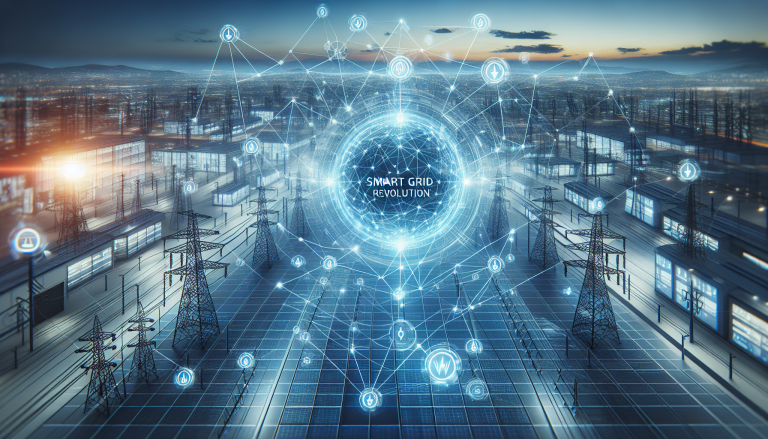IoT-Enabled Power Management: Revolutionizing Industrial Electrical Systems
Understanding the Power Management Transformation
In the rapidly evolving landscape of electrical engineering, IoT-enabled power management has emerged as a game-changing technology that is fundamentally reshaping how industrial facilities monitor, control, and optimize their electrical systems. As an electrical engineer with decades of experience, I’ve witnessed firsthand the incredible potential of integrating Internet of Things (IoT) technologies into power management strategies.
IoT-enabled power management represents a sophisticated approach to electrical infrastructure that goes far beyond traditional monitoring techniques. By embedding intelligent sensors, advanced communication protocols, and real-time data analytics into power systems, industries can now achieve unprecedented levels of efficiency, reliability, and performance.
The Core Components of IoT Power Management
At the heart of this technological revolution are sophisticated sensor networks that continuously collect granular data about electrical performance. These sensors can track voltage fluctuations, current loads, power consumption, temperature variations, and equipment health in real-time. Unlike traditional monitoring systems that provide periodic snapshots, IoT solutions offer continuous, comprehensive insights into electrical infrastructure.
The key components of an IoT-enabled power management system typically include:
1. Smart Sensors
2. Wireless Communication Protocols
3. Cloud-Based Analytics Platforms
4. Machine Learning Algorithms
5. Predictive Maintenance Interfaces
“The future of industrial electrical systems is not just about generating power, but intelligently managing and optimizing it,” remarks Dr. Elena Rodriguez, a leading researcher in electrical engineering.

Real-World Benefits and Applications
The practical advantages of IoT-powered electrical management are substantial. Industrial facilities can now:
• Reduce energy consumption by 15-25%
• Minimize unexpected equipment downtime
• Predict potential system failures before they occur
• Optimize maintenance schedules
• Lower operational costs
• Enhance overall system reliability
For instance, a manufacturing plant can use IoT sensors to monitor transformer temperatures, detecting potential overheating issues before they lead to catastrophic failures. These systems can automatically trigger alerts, initiate preventive maintenance, or even temporarily redistribute electrical loads to prevent system damage.
Advanced Technological Integration
Modern IoT power management solutions leverage cutting-edge technologies like artificial intelligence and machine learning to create adaptive, self-optimizing electrical systems. These intelligent platforms can:
1. Learn from historical performance data
2. Predict potential system anomalies
3. Automatically adjust power distribution
4. Recommend efficiency improvements
The integration of edge computing further enhances these capabilities, allowing for faster, more localized decision-making within complex electrical networks.
Cybersecurity Considerations
With increased connectivity comes an essential focus on cybersecurity. IoT-enabled power management systems require robust security protocols to protect against potential digital threats. Advanced encryption, multi-factor authentication, and continuous security monitoring are critical components of a comprehensive IoT power management strategy.
Future Outlook and Industry Trends
The electrical engineering sector is witnessing rapid evolution in IoT power management. Emerging trends include:
• Greater integration with renewable energy sources
• More granular, real-time analytics
• Enhanced machine learning capabilities
• Increased focus on sustainable energy management
• Improved cross-system interoperability
“We are transitioning from reactive to predictive and proactive power management,” notes industry expert James Thompson. “IoT is not just a technology; it’s a fundamental reimagining of how we interact with electrical systems.”
Implementation Strategies
For organizations considering IoT-enabled power management, a strategic approach is crucial:
1. Conduct comprehensive infrastructure assessment
2. Develop a phased implementation plan
3. Invest in staff training
4. Choose scalable, adaptable technologies
5. Establish clear performance metrics
While initial implementation costs can be significant, the long-term benefits in efficiency, reliability, and cost savings make IoT power management a compelling investment for forward-thinking industrial facilities.
Conclusion
IoT-enabled power management represents a transformative approach to electrical infrastructure. By combining advanced sensors, intelligent analytics, and adaptive technologies, industries can create more efficient, reliable, and responsive electrical systems.
As electrical engineers, our role is evolving from traditional maintenance to becoming strategic technology integrators who can leverage these innovative solutions to drive organizational performance and sustainability.
The future of electrical engineering is here, and it’s intelligent, connected, and remarkably promising.

